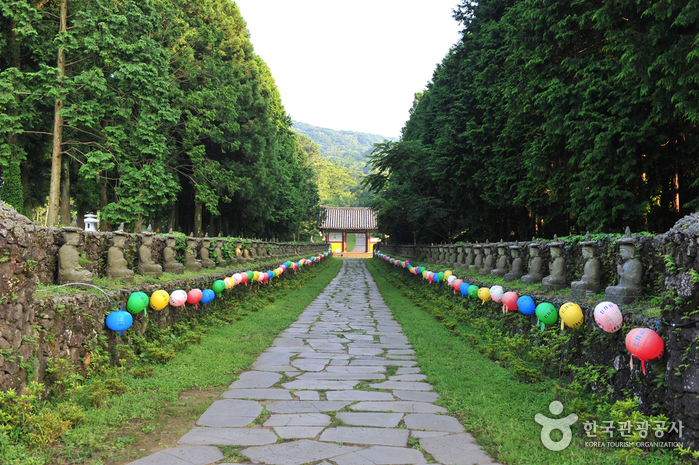Welcome to Gwaneumsa Temple
Welcome to Gwaneumsa Temple, a historic and picturesque destination nestled at the foot of the majestic Hallasan Mountain in South Korea. As you embark on your journey to this spiritual haven, allow me to guide you through its rich history, cultural significance, and the stunning natural wonders that surround it.
A Glimpse into the Past
The origins of Gwaneumsa Temple are shrouded in mystery, with legends suggesting that it was first established during the Tamra dynasty. While the exact date remains unknown, what we do know is that this Buddhist temple underwent a tumultuous period during the early 1700s. At that time, the leaders of the Joseon dynasty sought to eradicate Buddhism, leading to the demolition of Gwaneumsa Temple. Fortunately, in 1912, it was lovingly restored by a dedicated Buddhist nun, Anbongryeokwan, and later renovated in 1964, preserving its historical and spiritual significance.
A Place of Tranquility and Beauty
Gwaneumsa Temple is composed of several stunning structures, each holding its own charm and symbolism. The main shrine, Myeongbujeong Hall, stands as a testament to the devotion and reverence of its followers. As you explore further, you’ll encounter the bell tower, Sanshingak Pavilion, and the majestic Bulimun Gate, each contributing to the serene atmosphere that envelops the temple grounds.
Additionally, Gwaneumsa Temple operates a Buddhist school in downtown Jeju, providing an opportunity for locals and visitors alike to deepen their understanding of Buddhist teachings and traditions.
Exploring the Surroundings
While Gwaneumsa Temple itself is a remarkable destination, the surrounding area offers a wealth of natural and cultural attractions awaiting your discovery. Noteworthy among these is a wooden seated Buddhist goddess statue, recognized as a tangible cultural asset of Jeju-do in 1999. This beautifully crafted work of art is a testament to the island’s rich cultural heritage.
For nature enthusiasts, the cherry blossom tree habitat, designated as Jeju Natural Monument No. 50, is a sight to behold during the blooming season. Additionally, the nearby “4.3 Historic Site” pays homage to the civil revolution that took place on April 3rd, leaving a lasting impact on the island’s history.
For those seeking more outdoor adventures, Gwaneumsa Temple is conveniently located near captivating destinations such as the Mokseokwan Arboretum, Sancheondan, Halla Mountain, Uerimok Valley, Tamra Valley, and Gewaloreum Hill. The renowned “Gwaneumsa Trail,” a challenging yet rewarding hike up Halla Mountain, offers breathtaking views of vibrant autumn foliage and awe-inspiring gorges.
How to Get Here
If you’re coming from Jeju-si, you can easily reach Gwaneumsa Temple by taking the city bus towards Sancheondan. Once you arrive at Sancheondan, a leisurely 30-minute walk will lead you to the temple, allowing you to immerse yourself in the tranquil surroundings.
As you embark on your exploration of Gwaneumsa Temple, may you find solace and inspiration in its historic beauty, cultural significance, and the natural wonders that surround it. Enjoy your journey!

